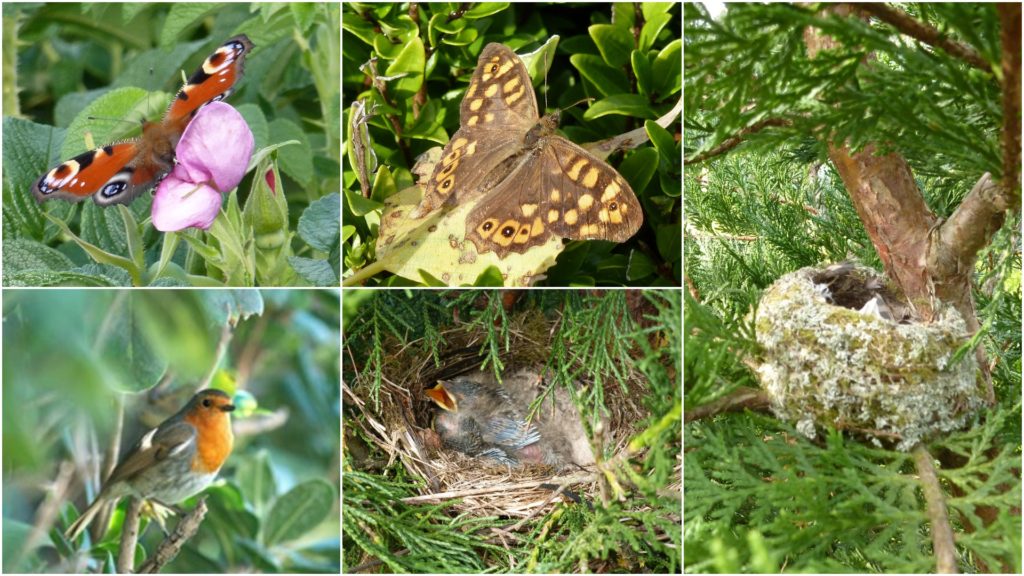
The 10 Best Hedges for Wildlife
The natural environment of our planet provides us with many benefits, from providing a home for wildlife to helping regulate the climate. While it may seem daunting to think about protecting and preserving the environment, one simple way to help is by planting hedges. Hedges provide vital habitat for wildlife, act as windbreaks, create privacy and block out noise pollution, and choosing the right species of hedge can make a huge difference.
To help, we put together some of the best hedging plants for wildlife, as well as their unique benefits for your garden.
Native Shrubs
Native shrubs are great hedge plants for wildlife and should be the first choice when planting, as they provide a wide variety of habitats, from sheltering birds to providing food for pollinators. Native shrubs and hedging plants also require less maintenance than non-native varieties, as they are adapted to local climatic conditions and can survive in most soils.
Good native hedge plants include:
1. Holly
This evergreen shrub is a great choice for wildlife, as it provides food for birds and mammals, with the distinctive red holly berries being particularly popular as a source of food! Its dense foliage also provides shelter from cold winds and predators and is a popular spot all year round.
2. Hawthorn
Another excellent native hedging species, hawthorn can be grown as a hedge or as individual trees. It flowers in spring, providing nectar for pollinators, and its fruits are highly sought after by birds such as thrushes and blackbirds.
3. Blackthorn
Blackthorn is a dense, spiny shrub that provides shelter for birds and small mammals. Its white flowers in spring attract pollinators, while its sloes (the edible fruits) are popular with birds - particularly song thrushes and redwings.
4. Beech
Another of the most popular hedging plants is beech, an attractive, deciduous hedge that provides a variety of habitats for wildlife. Its nuts are popular with a number of birds, while its foliage provides shelter from the wind. It also produces catkins, which provide food for pollinating insects in spring.
5. Privet
For hedge plants that require less maintenance, privet is a great choice. It provides excellent shelter for birds and its white flowers in summer attract pollinators, while blackbirds, sparrows and wrens are often seen battling it out over the berries produced in the winter months.
Flowering Hedges
Flowering shrubs and hedging plants are another great option for creating a wildlife-friendly garden. Not only do they provide shelter and food for pollinators, but they also look great!
Good flowering hedging plants include:
6. Lavender Plants
Lavender is a great, low-maintenance option for wildlife gardening, as it attracts bees and other pollinators with its fragrant flowers. Its foliage also provides shelter from the wind and its woody stems provide nesting sites for birds.
Other Wildlife Friendly Options
Some other great wildlife-friendly hedge plants include:
7. Leylandii
One of the best known hedge plants, the classic evergreen Leylandii is a fast-growing hedge that can grow to be thick and dense, offering shelter and nesting sites for birds. We have many established leylandii hedges growing around the perimeter of our nursery and each spring we regularly see many birds nesting within their dense branches where they are safe from predators.
8. Dogwood
Dogwood are an attractive deciduous hedge plants that provides cover for wildlife as well as food in the form of its red berries. Its white flowers attract pollinating insects, while its leaves turn a stunning crimson in autumn.
9. Photinia (Red Robin)
Another of the more popular evergreen hedge plants, Photinia (Red Robin) is an attractive hedge that provides plenty of shelter and nesting sites for wildlife. Its bright red foliage also provides food in the form of its berries, and it produces white flowers in spring that attract pollinating insects.
10. Laurel
Laurel hedges have long been a popular choice for gardeners looking for evergreen plants. Its dense foliage provides plenty of shelter and protection from the elements, particularly during the winter months. These plants also produce flowers in summer that provide nectar for pollinators and berries that are a great source of food for birds.
In addition to native and flowering shrubs and hedging plants, there are many other options for creating wildlife-friendly hedges. Hedgerows of mixed hedging species and a combination of plants provide a variety of habitats and can be an excellent choice for larger gardens. Planting trees that produce nuts or fruits is also beneficial, as this provides food for birds and mammals throughout the year. Leaving some areas of your garden uncut is another great way to encourage wildlife into your outdoor space.
Let Us Help!
Here at Mathias Nurseries, we understand the importance of creating wildlife-friendly garden plants, and offer a wide range of hedging plants. We can help you choose the best option for your outdoor space. Whether you opt for small plants or instant hedging, pot grown hedging or a range of fruit trees, we have a range of products available which can have an immediate impact on the biodiversity and wildlife friendliness of your garden.
Contact us today to learn more about creating the perfect hedges and plants for your garden and get started creating your own wildlife haven right outside your home.
